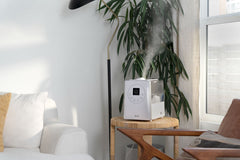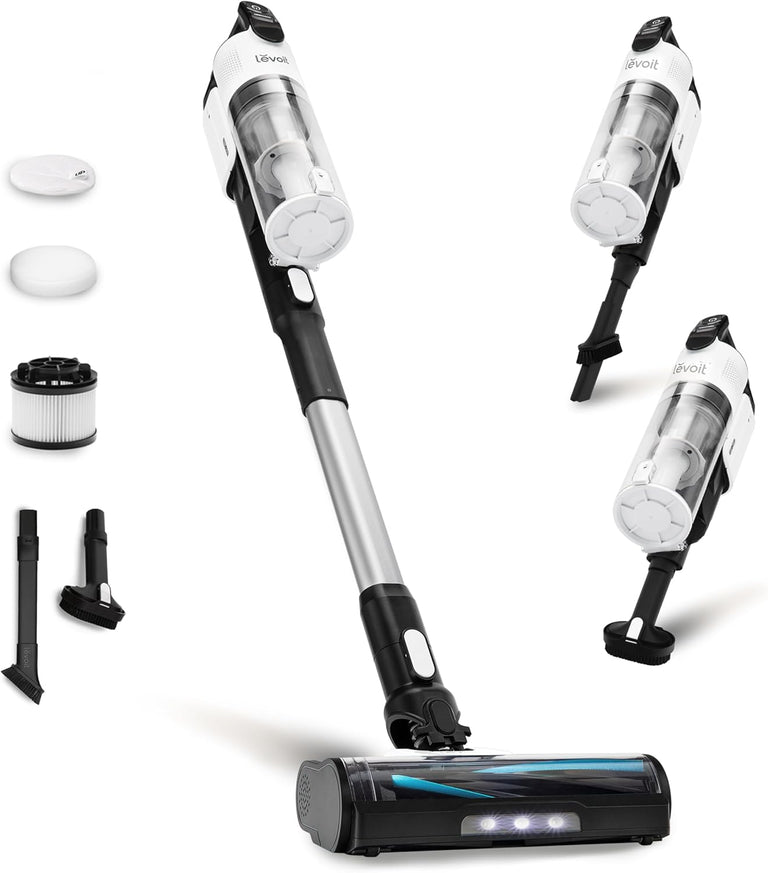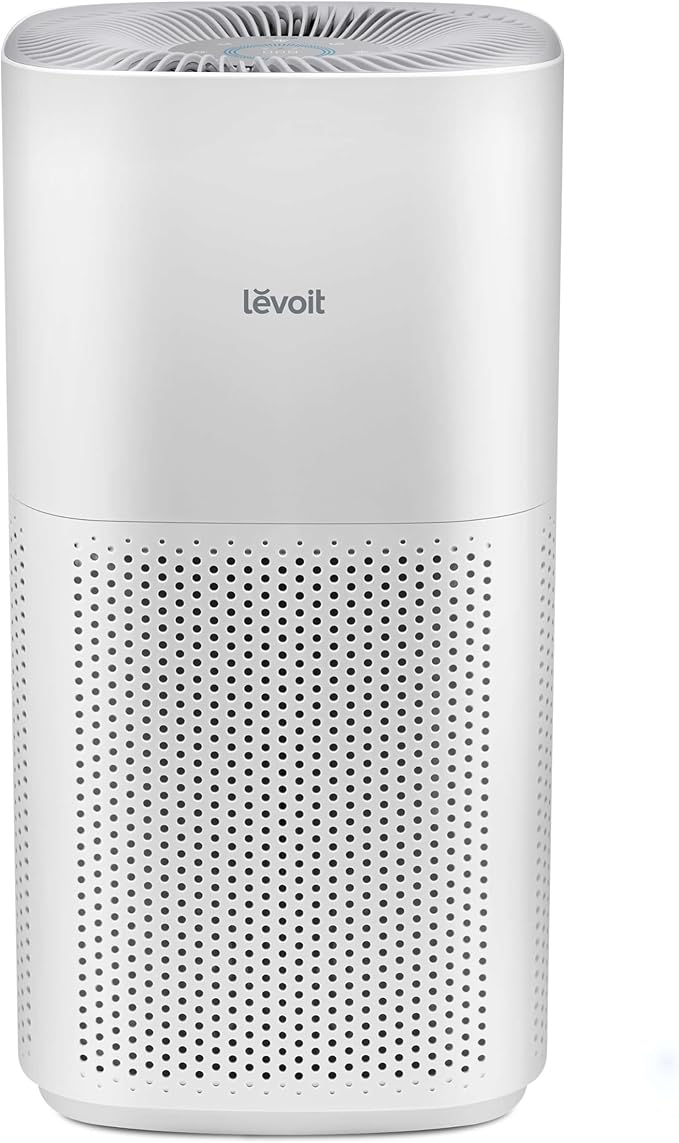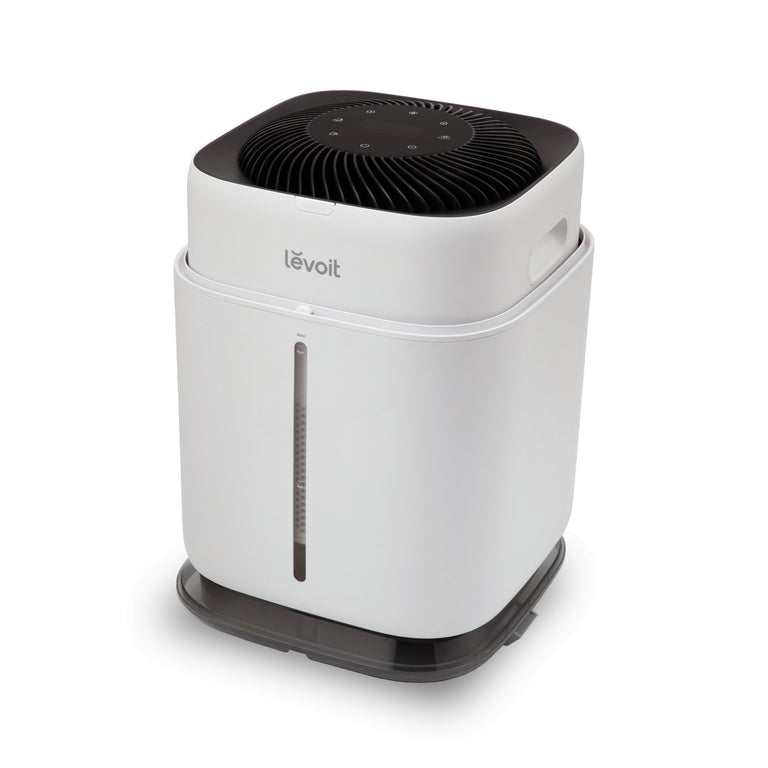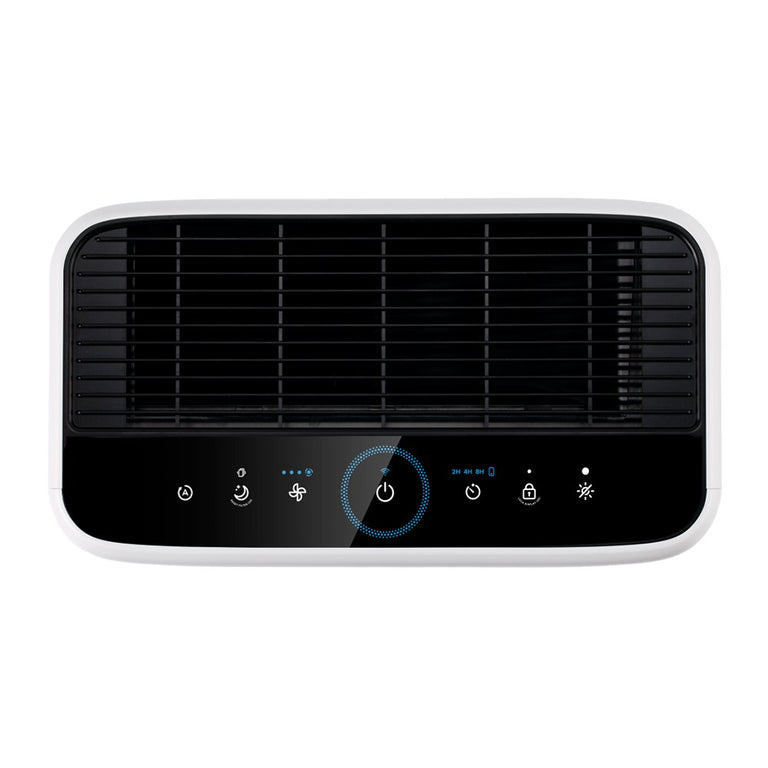
Cool Mist vs. Warm Mist Humidifiers: Making the Right Choice
-
1 min read
Choosing the Best Humidifier: Pros and Cons of Cool Mist vs. Warm Mist
Creating a space where you can feel comfortable and relaxed is essential for a home environment. Humidifiers play a vital role during colder months, when the warm air being pumped through your home heater can reduce humidity levels and create a dry environment.
Humidifiers are divided into two categories: cool mist and warm mist. Each type employs a distinct method of adding moisture to the air and has unique pros and cons. Below, we unravel their differences in functionality, efficiency, maintenance requirements, and more to help you decide which humidifier is the best fit for you, your family, and your home.
Understanding Humidifiers: A Basic Overview
Humidifiers are pivotal in managing indoor air comfort. Essentially, a humidifier's primary function is to introduce moisture into the air, thereby increasing the humidity level within an enclosed environment. This process is particularly important in dry areas, such as desert climates, or during the fall and winter months when the air in our home tends to be dry due to heating systems that strip indoor air of its natural moisture content.
Indoor humidity levels between 30% and 50% are considered ideal for several reasons:
- Benefits of humidified air: Dry air can irritate the nasal passages, throat, and lungs, causing discomfort and dry coughs. Adequate humidity levels can help soothe this irritation and can also help temporarily relieve discomfort caused by colds or the flu.
- Comfort: Proper humidity levels can help keep skin hydrated and soothe existing dried out, itchy skin.
- Preservation of Household Items: Dry air sucks moisture from wherever it can—including wood flooring and furniture. Even wooden musical instruments and leather can become cracked and warped in extremely dry conditions. Proper humidity levels help preserve the integrity and longevity of these expensive items and features in your home.
Cool Mist Humidifiers: An In-Depth Look
Cool mist humidifiers have increased in popularity due to their ability to improve humidity levels without heating the water they disperse. These devices release a cool vapor into the air, effectively increasing the room's humidity without increasing the temperature. This makes them a great option for warmer, drier climates, as well as families with young kids and pets.
How Cool Mist Humidifiers Work
There are two main types of cool mist humidifiers: ultrasonic and evaporative.
-
Ultrasonic cool mist humidifiers use ultrasonic vibrations to create a fine mist, which is then released into the air. An ultrasonic humidifier contains a small metal plate that vibrates at an ultrasonic frequency, expelling water droplets into the room.

-
Evaporative cool mist humidifiers employ a wick filter to absorb water from the humidifier's reservoir. A fan then blows air through the moistened filter, and some water evaporates into the room during the process. The filter also helps to filter out impurities in the water.

Advantages of Cool Mist Humidifiers
- Safety: One of the most significant benefits of cool mist humidifiers is safety. Because they don’t heat water, there is no risk of burns, making them a safer option for homes with children or pets.
- Comfort During Warmer Weather: Cool mist humidifiers won’t increase your room temperature because, again, they don’t heat the water into steam. They’re a perfect companion for warmer climates and during the spring and summer months.
- Energy Efficiency: No water heating = less energy used. Cool mist humidifiers typically consume less energy than warm mist humidifiers, since this added step of steam creation is left out.
Potential Drawbacks and Considerations
- Noise Level: Some cool mist humidifiers, particularly evaporative types, can be noisier than warm mist humidifiers due to the use of a fan.
- Maintenance: The standing water in these devices can become a breeding ground for mold and bacteria when not cleaned properly.
- Mineral Dust: Ultrasonic humidifiers can sometimes produce fine white dust as they disperse minerals from unfiltered water into the air. Using distilled water can minimize this issue.
The Gist of It
Cool mist humidifiers are an excellent choice for increasing humidity in larger spaces—particularly in warmer climates—as well as families and those looking to cut back on their energy usage. However, they require regular maintenance to remain safe and effective.
Warm Mist Humidifiers: An In-Depth Look
Warm mist humidifiers, also known as steam vaporizers, offer a different approach by emitting steam instead of a cool mist. Understanding how they function, and learning about their pros and cons can help you decide if these humidifiers are the right choice for you.
How Warm Mist Humidifiers Work
Warm mist humidifiers operate by boiling water to produce steam. The steam is then released as a warm mist.
Advantages of Warm Mist Humidifiers
- Quieter Operation: Generally, warm mist humidifiers are quieter than cool mist humidifiers, since they don’t use a fan.
- Comfort in Cold Weather: The warm vapor can add a bit of heat to the room, making these humidifiers a great option in colder climates or during winter months.
- Less Mineral Dust: Unlike some cool mist humidifiers, warm mist models are not expected to disperse substantial amounts of mineral dust into the air as minerals are left behind during the boiling process.
Potential Drawbacks and Considerations
- Energy Consumption: Warm mist humidifiers tend to use more electricity in order to boil water and generate steam.
- Risk of Burns: The boiling water and steam can pose a burn risk, particularly for children and pets. It’s important to always place these humidifiers in a safe location.
- Frequent Cleaning Required: Regular cleaning is essential in order to prevent mineral buildup from the boiled water and maintain efficient operation.
- Less Ideal in Warm Weather: In warmer climates or during hot weather, you might find the warm mist uncomfortable.
The Gist of It
Warm mist humidifiers are a great option for anyone looking for quieter operation and the added comfort of warm vapor, especially in cooler weather. However, they do come with higher energy consumption, safety concerns, and regular maintenance requirements.
Cool Mist vs Warm Mist Humidifier: Comparing Key Factors
Both types of humidifiers have unique features and considerations, particularly regarding operational efficiency, health and safety, maintenance, noise levels, and cost implications:
| Comparison | Cool Mist | Warm Mist |
| Energy consumption | More energy efficient | Less energy efficient |
| Area coverage | Great for larger rooms and open spaces | Great for smaller rooms |
| Burn concerns | No risk of burn from hot water / steam | Risk of burns from hot water / steam |
| Maintenance | Requires regular cleaning. Daily is recommended | Requires regular cleaning. Daily is recommended |
| Cleaning difficulty | Average (mold and mineral buildup must be cleaned frequently) | Average (mold and mineral buildup must be cleaned frequently) |
| Noise | Varies based on type | Low noise level |
| Initial cost | $–$$ | $$–$$$ |
Recommendations Based on Individual Needs
Choosing between a cool mist and a warm mist humidifier largely depends on preference, room size, and the prevailing climate conditions. But sometimes we have specific concerns or needs that cause us to take additional factors into consideration:
- For Asthma or Respiratory Conditions: Consult with your healthcare provider before using a humidifier.
- For Light Sleepers: A warm mist humidifier's quieter operation is the perfect gentle white noise at night.
- For Energy Watchers: If you’re working to cut back your energy consumption, try an evaporative cool mist humidifier.
- For Colder Climates: Warm mist humidifiers add warmth to the air, making them a great option for use during winter.
- For Warm and Dry Climates: Cool mist humidifiers can feel soothing to the skin, throat, and nasal passages in warmer, dry climates.
- For Households with Children and Pets: The absence of hot water or steam in cool mist humidifiers makes them a safer option in homes where children and pets are present, reducing the risk of accidental burns.
Frequently Asked Questions
Which humidifier is best for relieving seasonal discomfort?
Cool mist humidifiers are often recommended for individuals suffering from discomfort associated with seasonal irritants. They help add moisture to the air, which can alleviate some discomfort such as dry nasal passages and sore throats. However, it's important to maintain strict and frequent cleanings and use distilled water with cool mist humidifiers, as they can disperse mold and bacteria if not properly cared for. Always consult your healthcare provider before using a humidifier.
What should I use for a baby's room?
Cool mist humidifiers are generally considered safer, since they don't involve hot water or emit warm steam, which reduces the risk of accidental burns. Additionally, maintaining an adequate humidity level with a cool mist humidifier can help soothe baby’s discomfort from dry skin and congestion. As always, safety is paramount, so humidifiers should be placed out of reach of children and maintained regularly to prevent microbial growth.
Are there any risks associated with using humidifiers?
- Burn Risk: The biggest risk is burns from the hot water or steam created by a warm mist humidifier, which is particularly important to consider if you have children or pets at home.
- Bacterial Growth: Both warm and cool mist humidifiers can harbor bacteria and mold when not cleaned and maintained properly.
Can I use essential oils in both types of humidifiers?
The use of essential oils depends largely on the design and recommendation of the manufacturer. Always consult your humidifier’s user manual before adding essential oils.
Important Note
The information provided here is for informational and educational purposes only and should not be used in medical emergencies or for diagnosing or treating any medical condition. It's crucial to consult a licensed medical professional for diagnosis and treatment. External links are for informational purposes and do not constitute endorsements. No warranty of any kind, either expressed or implied, is made as to the accuracy, reliability, timeliness, or correctness of the information provided herein.
Citations:
Featured Products
-
Sold Out
- Smart
- 1-3 Gallons
-
Sold OutRegular price $109.99Unit price perRegular price
- Smart
- 1-3 Gallons
-
Sold OutRegular price $249.99Unit price perRegular price
- Smart
- Large rooms

